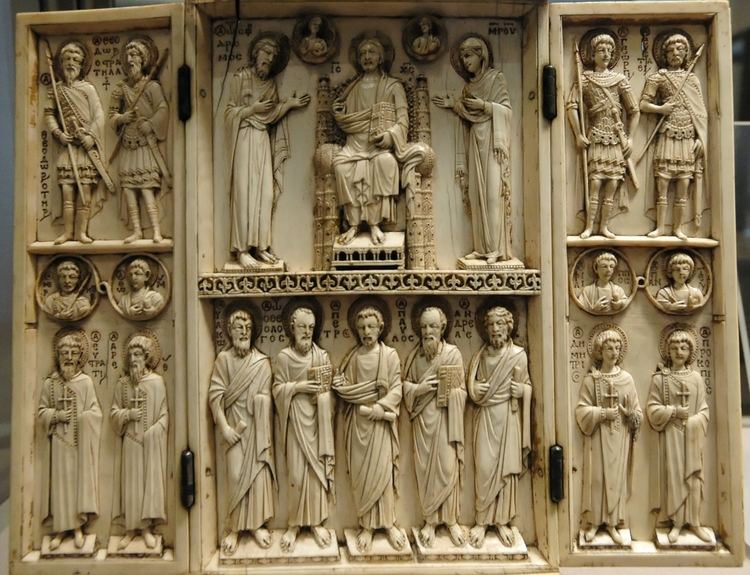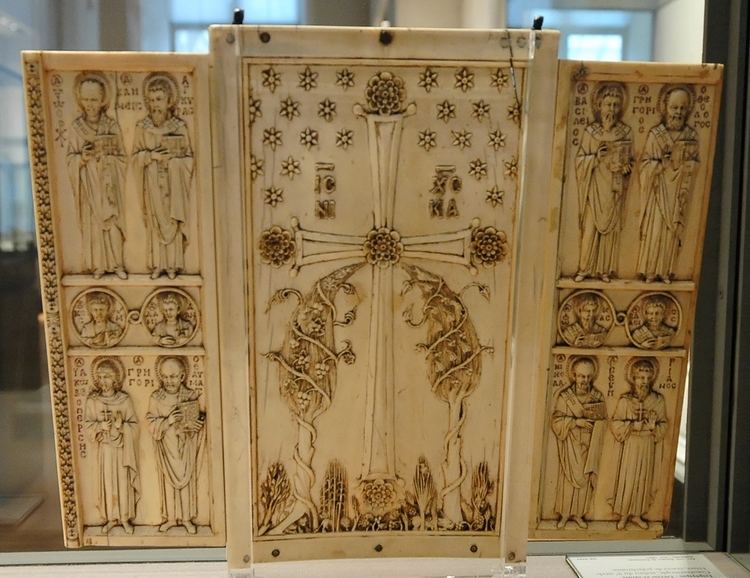 | ||
Similar Bas-relief, Artwork at The Louvre, Other artwork | ||
The Harbaville Triptych is a Byzantine ivory triptych of the middle of the 10th century with a Deesis and other saints, now in the Louvre. Traces of colouring can still be seen on some figures. It is regarded as the finest, and best-preserved, of the "Romanos group" of ivories from a workshop in Constantinople, probably closely connected with the Imperial Court.

The group takes its name from another ivory in the Cabinet des Médailles of the Bibliothèque nationale de France, Paris showing Christ crowning an Emperor, named as Romanos, and his Empress. This is thought to be either Romanos II crowned in 959, or possibly Romanos IV, crowned in 1068. related works are in Rome, the Vatican, and Moscow, this last another coronation probably datable to 944.

The Harbaville Triptych is considered "by far the finest, for it shows an elegance and delicacy which are absent in the others. All are in the polished, elegant style typical of the Court school." Other groups have also been identified, presumably representing the output of different workshops, perhaps also employed by the Court, but generally of lower quality, or at least refinement. Since much greater numbers of ivories survive than panel paintings from the period, they are very important for the history of Macedonian art.

All sides of the triptych are fully carved, with more saints on the outsides of the side leaves, and an elaborate decorative scheme on the back of the central leaf.

